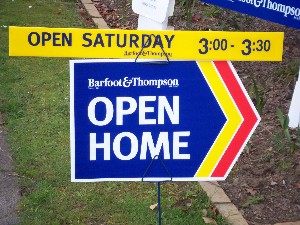The number of new listings on the market not keeping up with demand and putting upward pressure on house prices, Quotable Value’s (QV) latest House Price Index data show.
First home buyers are flooding the market in more affordable areas in a bid to get into a house before investors come back into the market and provide stiff competition.
Interest in buying property has been on an upward trajectory post-election and as the market heads towards what is typically the peak selling season, some buyers are looking to get in ahead of any perceived property price increases post-election.
National, the biggest winner in the election, housing policies include pulling the Brightline test back to two years and reinstating mortgage interest payments as a tax deduction over a two year period.
Residential property values have lifted for the third month in a row as the housing market finds it footing after a slump over the past two years.
The average home value increased by 2.1% over the three months to the end of October – an improvement on the 0.9% quarterly home value increase shown at the end of September – with the national average now sitting at $907,387.
Just three of the 16 main urban centres QV monitors had a fall in average home values – Whangarei (-0.4%), Hamilton (-0.2%) and New Plymouth (-2.8%) – with New Zealand’s biggest cities experiencing some of the largest gains. The average home value increased by 2.7% in Auckland, 2.5% in Wellington, and 1.8% in Christchurch.
QV operations manager James Wilson says the housing market is increasingly showing signs of recovery, in the context of a low level of sales activity and challenging economic conditions. “Interest rates and credit constraints continue to act as a handbrake for the most part, there are increasing signs of life across much of the country.”
While the property market’s recovery has largely been fuelled by first-home buyers, Wilson says the recovery is spreading into the largest urban areas, up the property ladder and into some of the higher value brackets. “Though most people remain cautious – and rightfully so, given economic conditions – we are beginning to see that mindset shift a little.
He reiterated that the market will likely remain “flat to gently rising” for the foreseeable future. “I still don’t expect to see a big rebound in house prices given the strength of the economic headwinds we’re facing. But considering what we've all been through since Covid first made its way to these shores, flat is probably the best thing given the current conditions.”
Wilson says it will be interesting to see whether some investors might become more active in the coming months, especially now that there’s some certainty around a change in government. This, he says, could increase the competitive pressure on house prices in more affordable areas and places where record migration is driving rapid population growth, but it’s still unlikely “we’ll see a major return of investors while high interest rates and credit constraints remain.”
Northland
Northland’s home values are largely back in the black this quarter.
Home values increased across the wider region by an average of 2% in the three months to the end of October, with Far North District (4.9%) and Kaipara (4.3%) leading the way.
However, home values continued to soften in Whangārei, where the average home value reduced by 0.4% to $724,514 – a marked improvement on the 1.8% average reduction recorded during the September quarter.
Auckland
Auckland’s residential property market is showing increasing signs of life.
The region’s average home value increased by 2.7% throughout the October quarter – a slight increase on the 1.6% average increase recorded for the September quarter – to reach $1,276,739. That figure is still 4.7% lower than at the start of 2023 and 5.3% lower than the same time last year.
Just one of the super city’s seven former territorial authorities was in the red last month, with Rodney’s average home value reducing by 0.2% during October. But all of them recorded positive home value growth for the quarter.
Local QV registered valuer Hugh Robson says the Auckland residential market has continued to gain momentum over the past four to five weeks. Agents report increased levels of enquiry from both investors and first-time buyers, with existing property owners wanting to upgrade to a better property making an increasing number of inquiries.
“The number of auctions has increased significantly as well, with agents reporting some good results,” Robson says. “The likely re-introduction of interest deductibility appears to be one reason for investors returning, with a significant increase in net migration into Auckland also helping to drive demand.”
Tauranga
Tauranga’s residential property market appears to be picking up.
The city’s average home value increased 1.1% this quarter to $1,005,976. That figure is 6.5% less than at the start of this calendar year, and 5.8% less than at the same time last year.
Local QV registered valuer Meghan Crowe says the market is showing some signs of property price recovery, with home values increasing locally by an average of 0.4% in October. “Real estate agents report no major increase in property interest here post the election, but they are predicting more interest over the coming summer months.
“Interest rates are still obviously higher than most people want them to be, so buyers’ expectations are becoming more realistic.
Waikato
Residential property values have largely stabilised in Hamilton.
They dropped by an average of 0.2% throughout the three months to the end of October – down slightly on the 0.1% growth recorded in the September quarter – with the average home value now sitting at $775,822. That figure is almost precisely the same as it was six months ago.
QV property consultant Marshall Wu says the market is recovering, albeit within the context of relatively low levels of buying activity. This suggests a subdued market sentiment overall and less-than-ideal conditions for real estate transactions.
“Even with the summer selling season on the horizon, it's unlikely we’ll see a substantial uptick in buying activity. At least not until we see a major upswing in consumer sentiment, a reduction in interest rates or a loosening of credit constraints.”
Meanwhile, the regional market also appears to have largely bottomed out, with the exception of South Waikato and Waitomo District, which saw average monthly declines of 2.2% and 2.4% respectively in October.
Rotorua
Residential property values continue to fluctuate in Rotorua.
The latest QV figures show home values have increased locally by an average of 1.4% throughout the last three months to the end of October, which is a marked improvement on the 0.3% average reduction recorded throughout the three months to the end of September.
The average home value in Rotorua is now $648,303, which is 4.9% less than it was 12 months ago and 3.4% lower than at the start of 2023.
Taranaki
Residential property values have yet to bottom out in New Plymouth.
The city’s average home value went down another 2.8% in the October quarter, dropping to $697,447. The rate of decline increased from 1.5% in the September quarter.
It’s a stark contrast to neighbouring Stratford and South Taranaki, where home values increased by an average of 4.2% this quarter. However, values remain more than $200,000 lower on average in these districts than in New Plymouth.
Hawke’s Bay
The residential property market continues to slowly recover in Napier and Hastings.
The index shows home values increased by an average of 1.7% this quarter in the former and by an average of 2.4% in the latter. Both places experienced more growth this quarter than last.
QV Hawke’s Bay manager Damian Hall says the market is still reasonably quiet but local agents are starting to see signs of improved activity and a little more confidence from buyers. The typical spring flurry and recent election results have likely contributed towards this.
“The top end of the market has continued to hold its own with the influence of flood money payouts and plenty of cash still floating about. The first-home buyer market, up to about $625,000, is also performing well. Napier and Hastings have both seen positive growth over the past two months, whereas Wairoa and Central Hawkes Bay have been a little up and down.”
Wairoa (-0.7%) was the only Hawke’s Bay district to see a small decline in average home value this quarter, with values up 1.3% on average in Central Hawke’s Bay.
Palmerston North
There are increasing signs of life within Palmerston North’s property market.
The average home value increased by 1.6% to $635,857 in the October quarter, after experiencing no growth throughout the three months to the end of September, and small reductions in July and August.
Local QV registered valuer Olivia Betts says sale prices in Palmerston North have levelled off over the past three months and now show a slight upward trend. Active agents in the market have indicated that this could be due to buyers wanting to get in before investors.
“There is also a perception that some people have of trying to ‘get a bargain’ before house prices rise again, with increased confidence and stabilising interest rates,” she says.
Wellington
Wellington’s residential property market continues to strengthen as we head towards summer.
The latest index shows the average home value increased by 2.5% across the greater Wellington region to $844,310 in the October quarter. It follows three consecutive months of positive growth.
Upper Hutt (-0.2) was the only local territorial authority to experience a small average decline during October, with all local council areas experiencing net-positive home value growth throughout the three months to the end of October.
Local QV senior consultant David Cornford says the market continues to strengthen in the Wellington region with another month of positive value growth recorded. Market activity has increased from the beginning of the year, with more active buyers and more properties for sale over the past few months.
“Well presented and well located homes are generally selling well. Due to the high number of recently completed townhouses and apartments, this segment of the market is not as strong as the sector for stand-alone homes.”
“The general sentiment is for values to rise modestly over the next 12 months. However, this growth will likely be dampened by economic headwinds, including continued high inflation, the cost of living crisis and rising unemployment,” Cornford says.
Nelson
Nelson’s residential property values experienced a small rebound this quarter.
October marked the city’s first positive quarter this year, with home values increasing by an average of 0.4%. The average home value is now $771,490, which is 4.4% lower than at the start of this calendar year and 4.9% less than the same time last year.
QV Nelson/Marlborough manager Craig Russell says home values have stabilised right across the top of the South Island this quarter, with Tasman and Marlborough also experiencing modest average home value growth of 0.1% and 0.7% respectively.
“The market typically enters a holding period over an election, while buyers and sellers wait and see what will happen next. Now that election day has passed, activity appears to be picking up in Nelson with vendors and buyers having increasing confidence to make decisions,” Russell says.
“We’re now seeing what most would describe as a more typical housing market, with days to sell at historically normal levels. Agents indicate that a number of out-of-town buyers are now also active in the market.”
West Coast
West Coast property values have fared better than most so far in 2023.
At the end of last month, residential property values in Buller District and Westland are 3% and 0.6% higher respectively than they were at the start of the calendar year. In Grey District, they are down 2.1% on average, which is almost half as much as a national average decline of 4%.
On an annual basis, residential property values in Westland are on average 5.6% higher than at the same time last year. Values are also 4% and 3.8% higher on average in Buller and Grey District respectively.
Canterbury
The residential property market continues to recover in Canterbury.
Home values increased across the wider region by an average of 1.9% this quarter, with all bar two districts showing net positive growth. There was no movement in Ashburton – up or down – and the average home value fell 6.2% in Waimate.
In Christchurch, the average home value increased by 1.8% this quarter to $740,129. That figure is 2.4% lower than the same point last year, and 1.5% less than at the start of this year.
Local QV registered valuer Olivia Brownie says this small momentum appears to be further cementing the fact that we’re well past the bottom of the market. I expect we’ll continue to see modest – if any – growth over the coming few months as we still have economic pressures limiting any significant price gains.”
She says the wider Christchurch region has also had a modest amount of home value growth, with Waimakariri and Selwyn District recording average quarterly increases of 1.2% and 2.5% respectively.
Dunedin
Dunedin just posted its first positive quarter since the downturn began in late 2021.
The latest index shows residential property values increased in Dunedin by an average of 0.7% throughout the three months to the end of October. The city’s average home value is now $614,389, which is 5.5% lower than the same time last year.
Local QV registered valuer Rebecca Johnston says real estate agents are reporting increases in open home attendance and multi-offer situations. The number of houses for sale on the market has also increased, but we’re still seeing a tightening of supply versus demand overall. This is putting some upward pressure on prices.”
Meanwhile, residential property values are also up across the wider Otago region this quarter – including Central Otago (0.9%), Clutha (0.6%) and Waitaki (0.5%).
“The upper quartile level remains strong in Waitaki. This could be due to the aging housing stock in Oamaru, increased competition and higher building costs for new builds, says Johnston. There are also not many quality vacant sections available in Oamaru, she says.
Queenstown
Residential property values continue to slowly build in Queenstown.
The average home value increased by 1% to $1,731,858 in the October quarter, which is a fraction of a percentage point higher than last month’s quarterly rate of home value growth.
The average home value is now 1.8% higher than the same time last year, compared to a 4.6% average annual home value decline nationally.
Invercargill
The index recorded another modest month of home value growth in Invercargill.
The average residential property value in the country’s southern-most city increased by 0.4% in October to $469,812. That figure has now grown by 2.4% this quarter, but it still remains 0.8% lower than the same time last year.
Local registered valuer Andrew Ronald says October marked the fourth month in a row that home values had increased on average in Invercargill.
“Values have stopped falling now and are beginning to strengthen, but there’s still less demand overall than there was at the start of the downturn, with only a limited number of investors active in the market since interest rates increased and tax deductibility rules changed.”





 Search
Search
